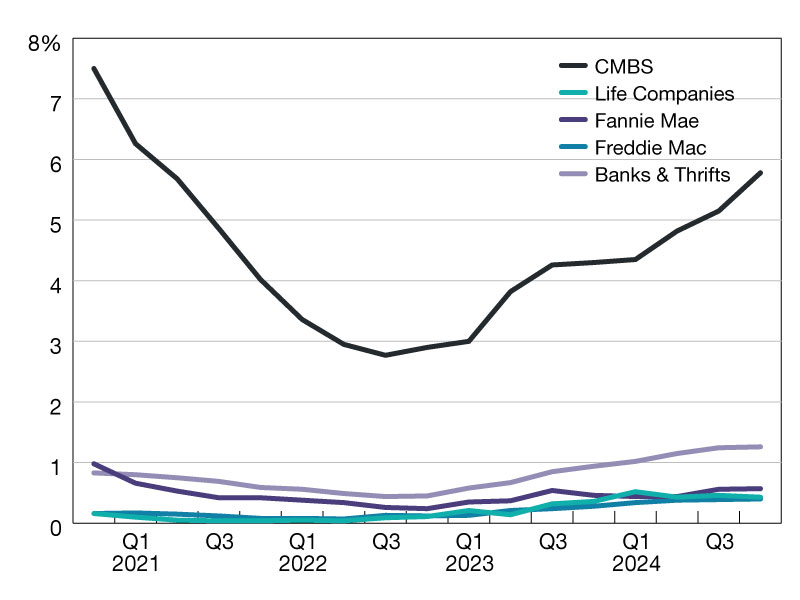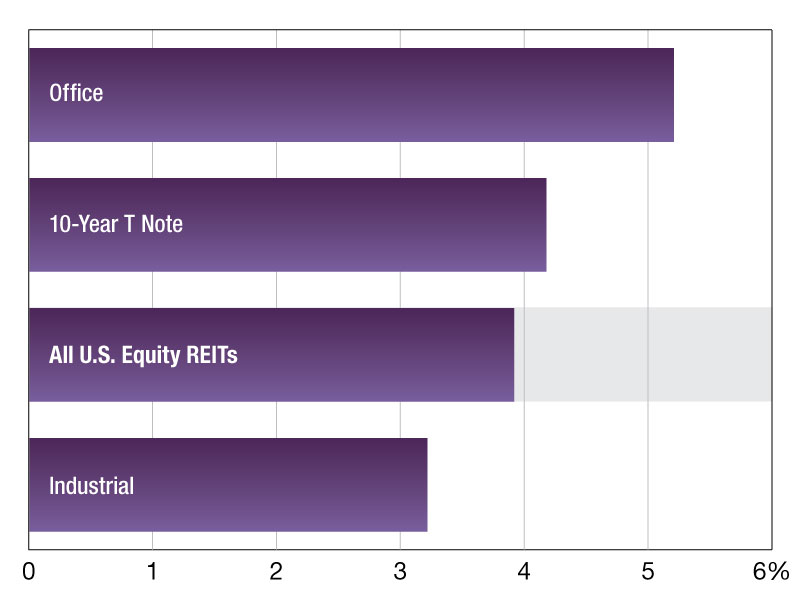An Integrative Approach to Workplace Strategy
In an exclusive podcast interview with CPE, Adam Stoltz, managing director of workplace experience & strategy for Transwestern, provides a blueprint for developing a data-driven plan that addresses the changing nature of work.
By Sanyu Kyeyune
Adam Stoltz uses social science data to help landlord and tenant clients make better decisions about space occupancy and management. As managing director of workplace experience & strategy for Transwestern, he has delivered real estate and design solutions to a broad range of organizations throughout the public and private sectors. With more than a decade of experience in facility planning and programming, organizational performance measurement and change management program development, Stoltz’s expertise is at the juncture of people and the built environment.
In an exclusive podcast interview with CPE Radio, Stoltz details the evolving nature of work and outlines best practices for developing and executing an effective workplace strategy linked to tangible performance metrics.
Understanding Expectations
One of the primary trends driving workplace strategy is that people are looking for improved flexibility, choice and control over where they do their best work, Stoltz acknowledged. All of this increased mobility—and in turn, unpredictability—affects how organizations handle space planning: “The technology, aligned now with how we work, is having a significant impact on how (office users) expect to be supported (while) moving around a space,” Stoltz explained.
Increasingly, employers are considering location to be a key selling point, and beyond where to set up shop, they are weighing the advantages and setbacks of urban versus suburban settings, as well as considering options beyond core markets. These changing preferences put pressure on landlords, who in order to stay competitive, must to make sure not only that their buildings are up to par but also that they can serve as a useful resource to a variety of tenants.
Expectations around service are changing, too, with more emphasis placed on the entire experience of occupying a building, rather than a narrow focus on tangible amenities. “Maintaining a holistic perspective on what it means to provide an office space can be difficult,” Stoltz noted. As a result, office landlords need to be better attuned to these shifts—which is where a workplace strategist can be particularly useful—and respond with solutions that adequately reflect the trend toward improved flexibility.
Especially in creative or knowledge-based working environments, Stoltz has observed more frequent collaboration among departments. To achieve goals, employees may spend more time interacting with divisions in different locations and less time working from a designated desk or workspace. For this reason, a one-size-fits-all space planning strategy cannot sufficiently meet the needs of many of today’s organizations.
Like any business strategy, a workplace strategy is meant to evolve in response to changing market conditions, preferences and innovations. For this reason, Stoltz encourages organizations to be prepared to make adjustments to their initial plans. It’s also important for leadership to recognize that various departments or functions work in different ways and to offer customized support systems that help each division optimize performance.
Above all, Stoltz urged, it’s crucial for an organization’s workplace strategy to be rooted in truth and defendable data: “It’s too easy today to quantify things that historically we’ve relied on intuition and gut to guide. … At least, have some quantifiable measures to back that up or to help guide decision making.” Relying on these measures positions an organization to make better space planning choices, by taking into account how and when occupants interact with areas within a workplace.
Gathering Data
In Stoltz’s view, the best way to amass this data is to ask employees to complete an anonymous survey, in order to obtain responses in several areas, including how and when spaces are being utilized, as well as how firms can improve the ways they provide support. Using this method, employers can collect information that they can subsequently segment to gain meaningful insights about their employees, based on categories such as tenure, job function or age group.
Furthermore, the survey results can also help debunk misconceptions about the impact of a given factor on employee sentiments. “The myth about generational differences—particularly as it relates to new and different workplace expectations—is often one that a workplace survey can help to address,” Stoltz explained. “Often the data shows that there aren’t differences based on generation, that it’s actually the complexity of the work that you do within an organization that tends to drive how well the space is supporting you.” By moving away from this perception, he said, workplace strategists can create a more level playing field for their employees.
An employee survey can deliver a number of benefits, chief among them generating buy-in and endorsement for an eventual solution. “A survey is not only a cost-effective but time-effective way of collecting a lot of information from a number of people in a relatively short period of time and allows for a broad set of voices to enter into the conversation about what’s important to them and what they need to be effective.” Additionally, seeking candid input from employees serves to democratize the dialogue around workplace strategy and change management.
Another advantage is that the survey can be replicated easily, as a more effective alternative to a lengthy annual questionnaire. To keep employees engaged, Stoltz suggests a shorter, more thematic, quarterly survey of no more than 10 questions that can be completed in under three minutes. Additionally, more frequent surveys provide employers with richer, more current data about how well they’re supporting their employees. They also enable decision-makers to prioritize process improvement tasks based on what matters most to employees.
The survey also enables the creation of a performance dashboard of workplace health based on overall satisfaction, support for individual and group effectiveness, as well as pride in the workplace.
Implementation options
What works for one firm may not be the best fit for another. Those with greater stability may be drawn to a more comprehensive workplace strategy that assumes the firm will occupy a space for several years, as compared to younger companies whose unpredictability would necessitate a shorter-term strategy. An organization may also elect to work with an internal strategist or subcontract a third party.
In-house strategists enjoy the advantage of closer proximity to the day-to-day working experience—along with greater familiarity with a company’s mission—given their immediate access to various departments within the organization, such as human resources. In many cases, they’re also able to gain the trust of employees and leaders within the organization, which is crucial to obtaining useful data, noted Stoltz, adding, “Your colleagues—who are going to enable that strategy coming to life—are sitting right next to you.”
On the other hand, working with a third-party provider can be helpful in exploring change in the workplace, which is often a complex issue for employees to discuss, Stoltz offered. Furthermore, a third-party strategist can be brought in to supplement a company’s specific need on a case-by-case basis, which could be a more appropriate solution for smaller, less established or otherwise resource-constrained firms. Third-party strategists also provide the benefit of outside knowledge and perspectives, bringing experience from various geographic markets and types of organizations.
Implementing a workplace strategy presents unique challenges—and a range of opportunities—for office landlords and tenants: “The answer is not a single setting,” Stoltz held, “but a variety of settings that match the diversity of the work being done and the employees doing it.” Listen to him detail his approach on CPE Radio.








You must be logged in to post a comment.